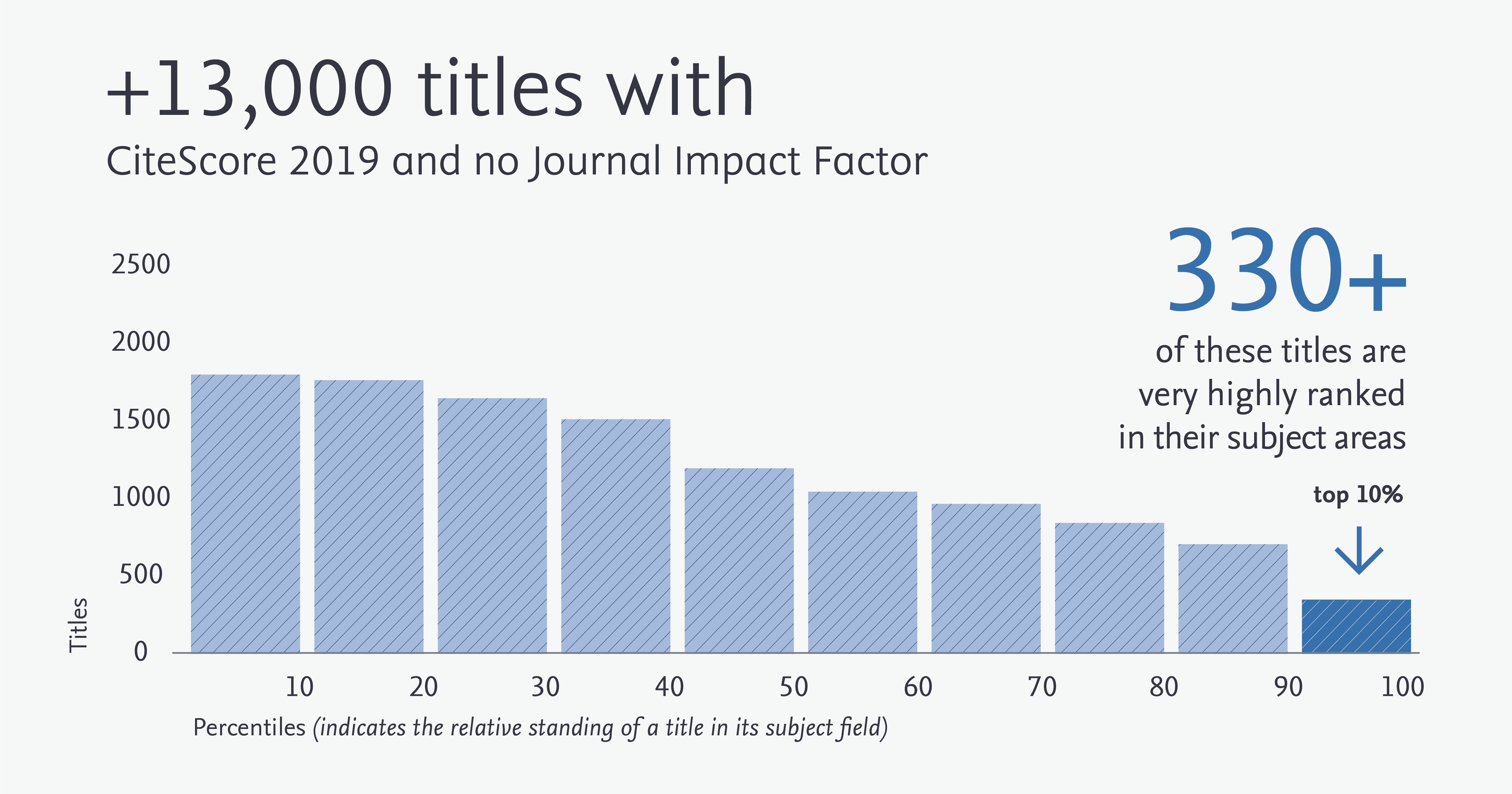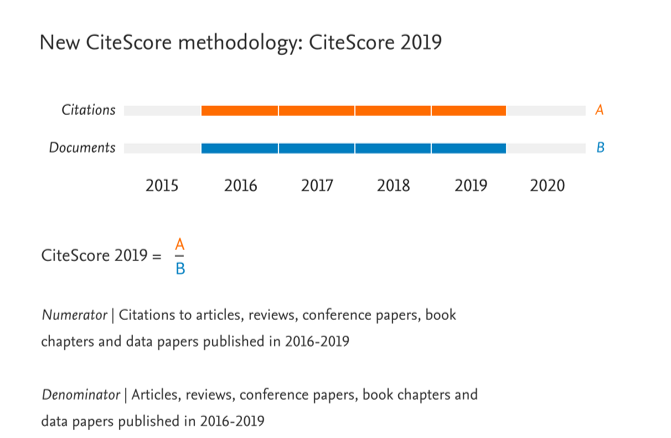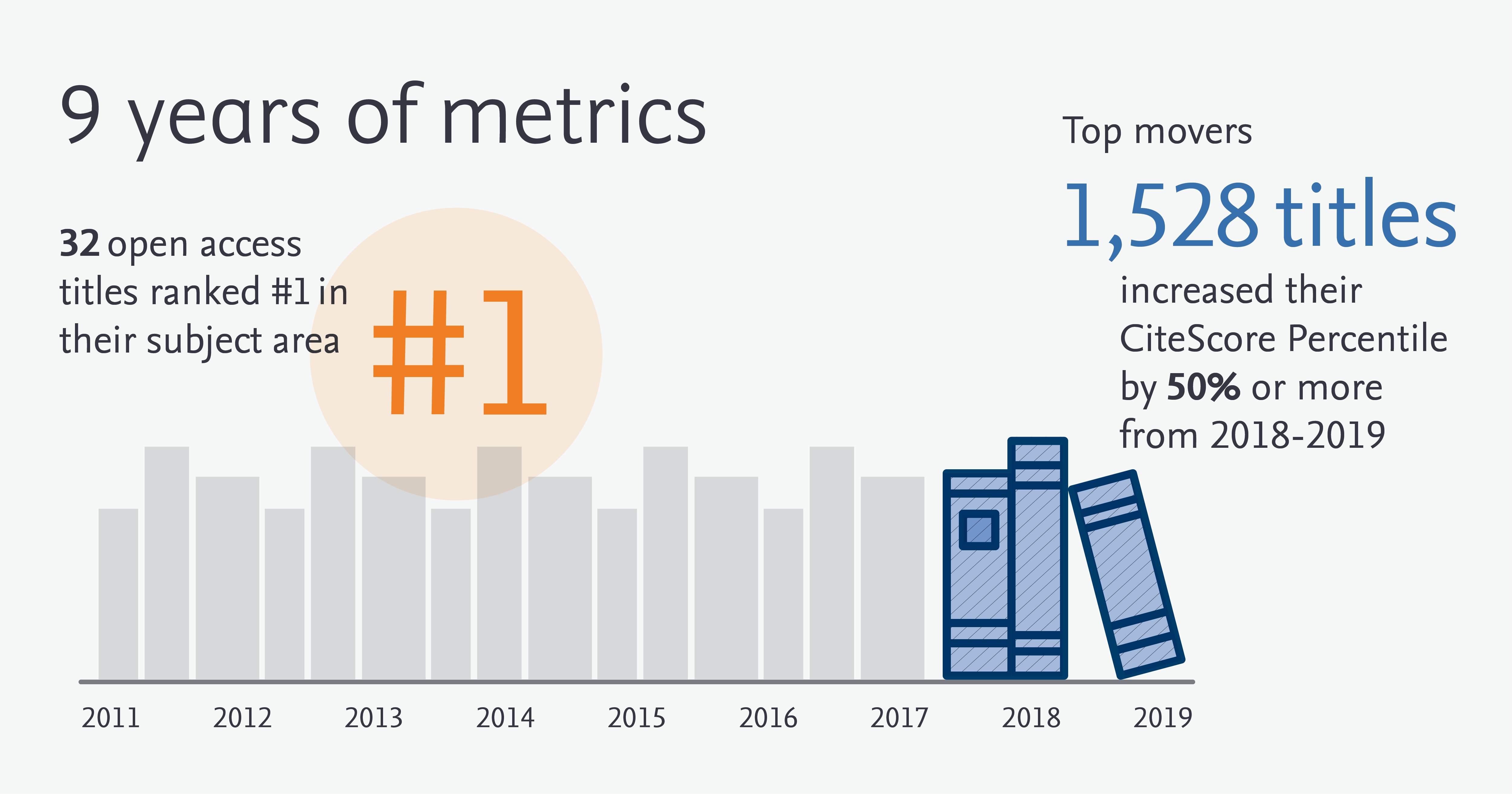CiteScore 2019 now LIVE!
CiteScore 2019 values are now available in Scopus!
Did you know that there are over 13,000 titles which have a CiteScore 2019 but no Impact Factor? Of these 13,000 titles, more than 330 of the titles are very highly ranked (in the top 10%) of their specific subject area.
Enhanced CiteScore methodology
CiteScore 2019 has a new and enhanced methodology based on customer feedback, and industry expertise, ensuring that CiteScore remains comprehensives, current, clear and free.
The new methodology will also be used to retrospectively calculated CiteScore values for all previous years (2011 – 2018) to allow for clear and fair trend analysis over years. The changes which you will see are:
Adjusting the methodology to include typically peer-reviewed publications.
Allowing for fairer comparison between journals, by including only peer-reviewed publication types (articles, reviews, conference papers, book chapters and data papers) in both the citation numerator and publication denominator, it makes the comparison between journals more robust. Previously, all publications were included in the calculations (non-peer reviewed article types like editorials, news items, letters, notes).
Including publications in the most recent year
Publications in the four years up to and including the calculation year will now be included, which means that CiteScore can be calculated for journals with just a single year of publication, giving new journals – including many Open Access and China-focused journals – a first indication of their citation impact one year earlier.
Longer citation window (4 years instead of 1 year).
Citations will now be counted cumulatively, from the year of publication until the end of the calculation window, which is up to four years. This means that all citations received by publications in this period are counted towards CiteScore values, allowing a more robust assessment. In the past, citations were counted for the previous year only.
Display only 1 decimal values.
CiteScore values are displayed to one decimal place in order to avoid an impression of precision, in line with industry best-practice. Previously, CiteScore values were displayed to two decimal places.
With the implementation of the new improved methodology there are 3293 with a CiteScore 2019, which would otherwise would not have received a CiteScore this year (using the previous methodology).
There are 25,302 (of which 5,710 are open access) serials which have a CiteScore 2019! Breaking that down even further it comprises
24,180 journals
257 Trade journals
719 book series
146 conference proceedings series
CiteScore is clear, current, comprehensive and free
CiteScore was first introduced in 2016, as part of an evolving array of research metrics. The metrics are a standard to help measure citation impact for journals, book series, conference proceedings and trade journals. Learn more by registering for one (or both) of our upcoming webinars.
CiteScore are comprehensive, clear, current and free metrics to help analyze where research is published.
Comprehensive: CiteScore 2019 is available for over 25,000 active titles on Scopus, including all types of active serial titles on Scopus – peer-reviewed journals, book series, conference proceedings and trade journals, in 330 disciplines. CiteScore does not discriminate: if a title can be cited, CiteScore will count it.
Current: CiteScore Tracker allows you to track how the current year’s CiteScore is building each month, giving a good indication of what the following year’s value will be.
Clear (transparent and easy to reproduce): CiteScore now gives complete transparency into the underlying data by allowing users to click into the numerator (citations) and denominator (documents). Simple to replicate, the calculations for CiteScore metrics are straightforward with no secret algorithms or hidden details to influence results.
Free: CiteScore metrics, including access to the underlying data, continue to be free to access without a Scopus subscription via the journal metrics website, the Scopus source browse page, and individual source profile pages.
CiteScore now considers 9 years of metrics with 32 open access journals ranked in first place in their respective subject areas. From 2018 to 2019 more than 1,500 increased their CiteScore Percentile by 50% or more!
View our CiteScore training videos
Researchers: CiteScore 2019 and the responsible use of metrics
Researchers can use CiteScore to help to determine which serial titles to read, where to publish their research, and to showcase their research outputs.
For researchers, your time is valuable, so you need to choose what you read wisely. With such comprehensive serial coverage, CiteScore can help researchers discover more titles, both within their own disciplines and in other areas of interest. This broadening of your scope can help drive more informed decisions about what to read.
Just as important as knowing which publications to read is knowing which ones to publish in. CiteScore helps guide you to the right titles for your research, so you can submit your work with confidence.
Librarians: The many helpful applications of journal impact metrics
Librarians and information professionals to help decide which serial titles to subscribe to. Journal impact metrics are often discussed, especially when in popular usage they become proxies for complex concepts such as quality or impact. However, they also have many distinct and helpful applications. Each metric may offer a different emphasis based on its underlying data source, method of calculation, or context of use. For this reason, we promote the responsible use of research metrics.
Join our webinar to learn how employing the CiteScore and other journal impact metrics can support Librarians with:
- Developing your portfolio management strategy
- Providing insight into which serial titles to subscribe to
- Empowering researchers to uncover journals which to submit their work to
- Teach students how to employ transparent and easy to understand journal metrics
Download the CiteScore Factsheet
Share the CiteScore infographic poster




